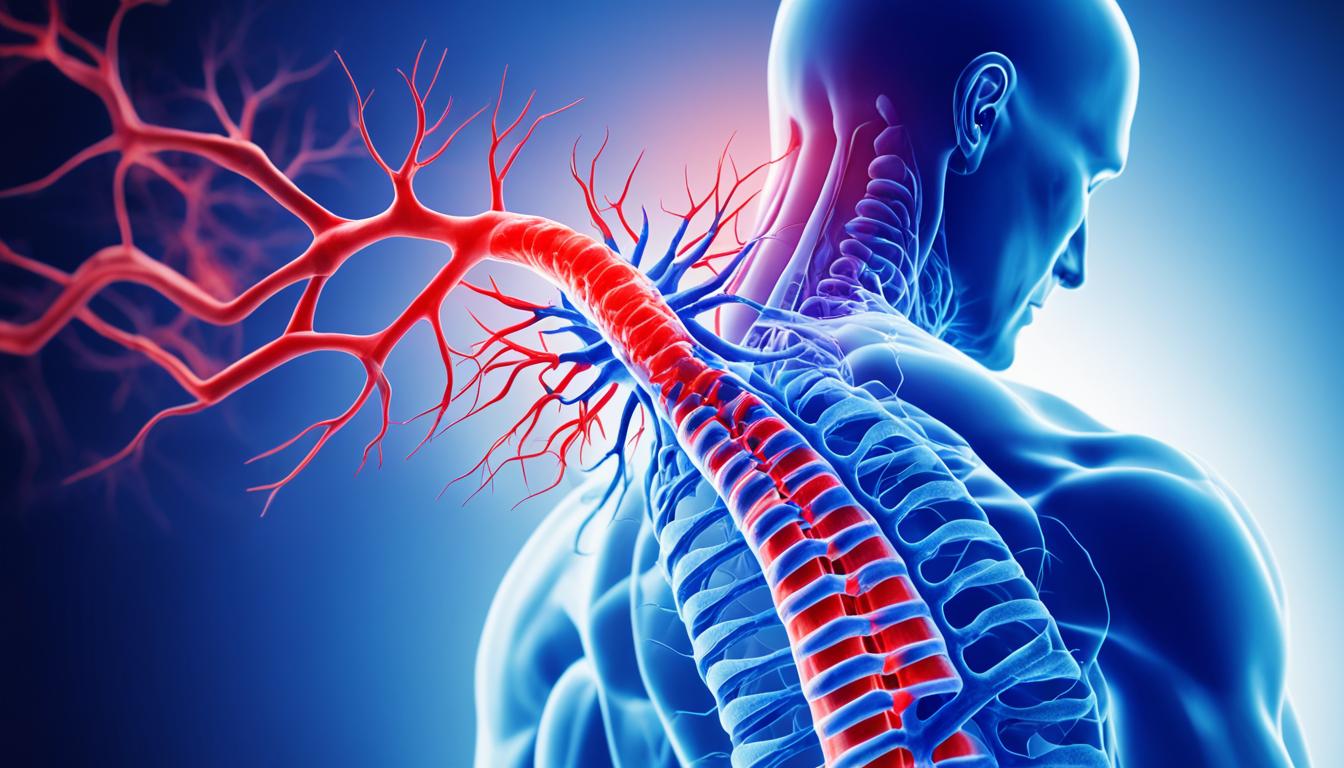Spina bifida is a birth disorder that affects the spine’s development. This issue arises when the neural tube, the part that creates the brain and spinal cord, doesn’t fully close early in pregnancy. As a result, the spinal cord can have a defect leading to various problems and symptoms.
There are several types of spina bifida such as spina bifida occulta, closed neural tube defects, meningocele, and myelomeningocele. The seriousness of the disease depends on its kind and the extent of the issue. Spina bifida can bring about nerve damage, learning difficulties, and physical disabilities of different levels.
At present, there’s no cure for spina bifida. But, there are treatments to help manage the condition and make the person’s life better. These solutions can involve surgeries, physical therapy, using assistive devices, and taking certain medications.
Key Takeaways:
- Spina bifida impacts the spine’s growth and is present from birth.
- It happens when the neural tube remains partially open, affecting the spinal cord.
- Spina bifida comes in various forms, each with its unique symptoms and challenges.
- Treatments are focused on enhancing life quality and managing the condition.
- Stem cell therapy is showing potential in treating spina bifida.
Types of Spina Bifida and Complications
To understand spina bifida, it’s key to look at its types and possible issues. There are four types: spina bifida occulta, closed neural tube defects, meningocele, and myelomeningocele.
Spina Bifida Occulta
Spina bifida occulta is the least severe type. It’s often found by chance in medical tests. Though it might not cause big problems, it can lead to small issues with the spine.
Closed Neural Tube Defects
Closed neural tube defects mean there are issues with the spine, bone, or spinal cord covers. This can cause weakness, trouble controlling the bladder, and bowel issues. The symptoms change based on the seriousness and where the problem is.
Meningocele
In meningocele, a sac of spinal fluid sticks out through the spine. This type usually causes very little nerve damage and can be fixed with surgery. But, it still needs careful watching for any issues that might come up.
Myelomeningocele
Myelomeningocele is the most serious kind of spina bifida. Here, the spinal cord or nerves show through a hole in the spine. This can cause severe nerve damage and problems with how the body works. Babies often need surgery very soon to close the hole and protect their nerves.
The issues with spina bifida can change with the type and how bad it is. Some of the usual problems include odd feelings or not being able to move, Chiari II malformation, fluid on the brain, meningitis, a cord in the spine that doesn’t move like it should, not being able to control your bladder or bowel, and trouble learning. Taking care of these things early, getting the right medical help, and support can make life better for someone with spina bifida.
Stem Cell Therapy for Spina Bifida
Stem cell therapy is changing how we treat spina bifida. Stem cells can change into many cell types. This makes them a possible solution to fix the spinal cord openings in people with spina bifida. Studies show that using stem cells can make people with spina bifida move better. It can help with muscle strength, feelings, and how well they move.
People who get stem cell therapy for spina bifida might also see better control of their bowel and bladder. This method, along with physical therapy, can help repair the nerves. It helps people get some of their functions back.
As we learn more and improve stem cell therapy for spina bifida, there’s more hope for better outcomes. This new method can make life better for those with spina bifida. It opens a way for them to have a better life and more freedom.
FAQ
Q: What is spina bifida?
A: Spina bifida is a birth disorder that affects the spine’s normal growth. It happens when the neural tube, forming the brain and spinal cord, doesn’t fully close in early pregnancy.
Q: What are the different types of spina bifida?
A: There are several types, such as spina bifida occulta and myelomeningocele. Spina bifida occulta is the mildest. In myelomeningocele, the most severe, the spinal cord or nerves can be seen through an opening in the spine.
Q: What are the symptoms of spina bifida?
A: The signs of spina bifida differ based on the type and severity. They can include nerve damage, trouble learning, and various levels of physical problems.
Q: Are there treatments available for spina bifida?
A: Spina bifida treatments focus on managing the condition and boosting life quality. They might involve surgery, physical therapy, and using special devices.
Q: What are the complications of spina bifida?
A: Complications can range from feeling odd sensations to paralysis. Other issues include Chiari II malformation, hydrocephalus, meningitis, and learning difficulties.
Q: Can stem cell therapy help in the treatment of spina bifida?
A: Stem cell therapy shows promise in treating spina bifida. Stem cells can become various cell types, helping the spinal cord heal. Studies indicate it can enhance physical skills, strength, and manage bladder and bowel better in patients.

